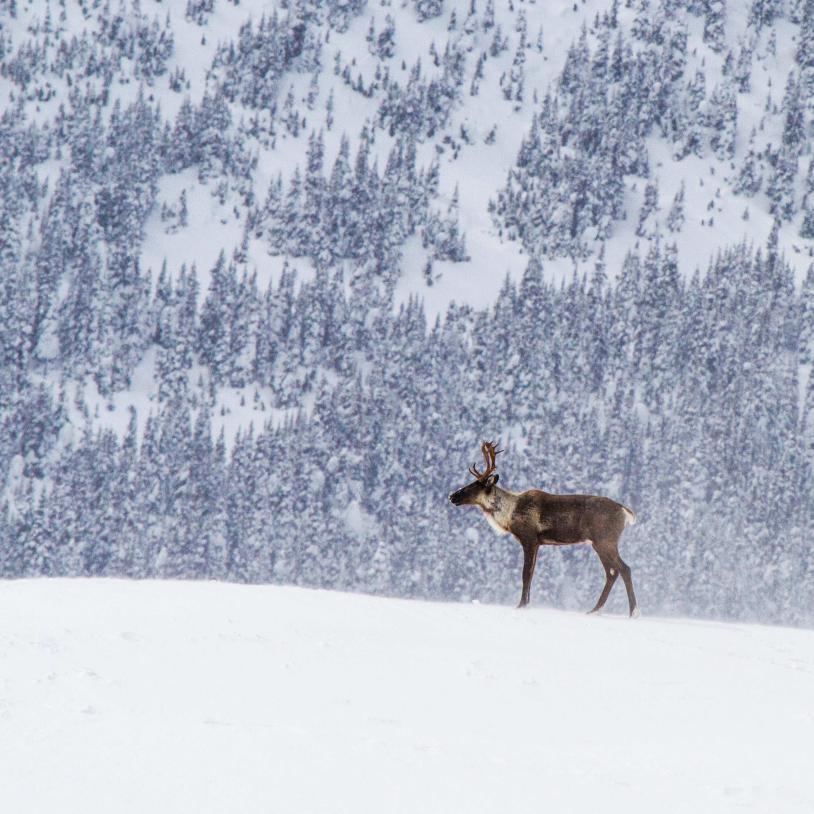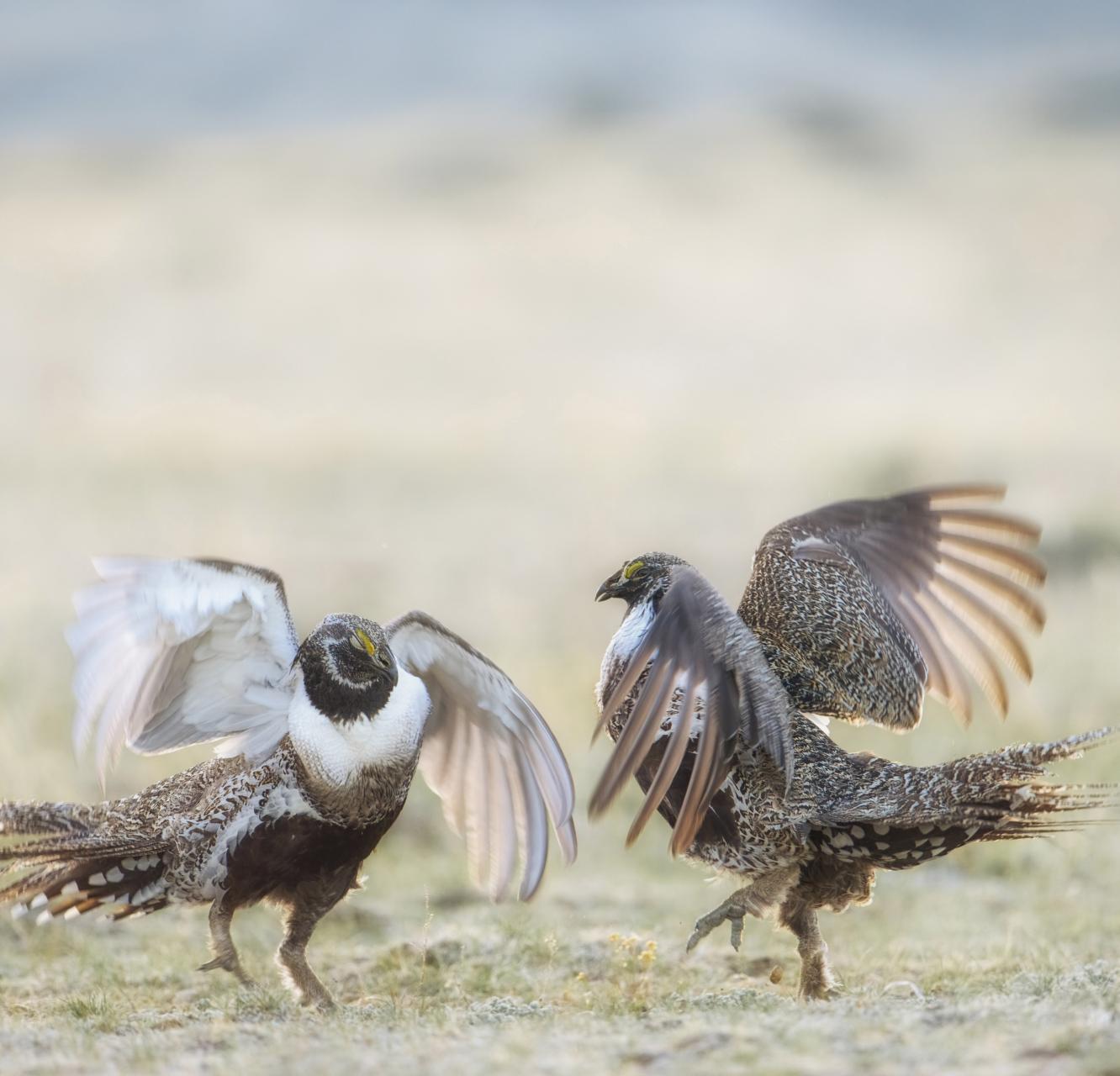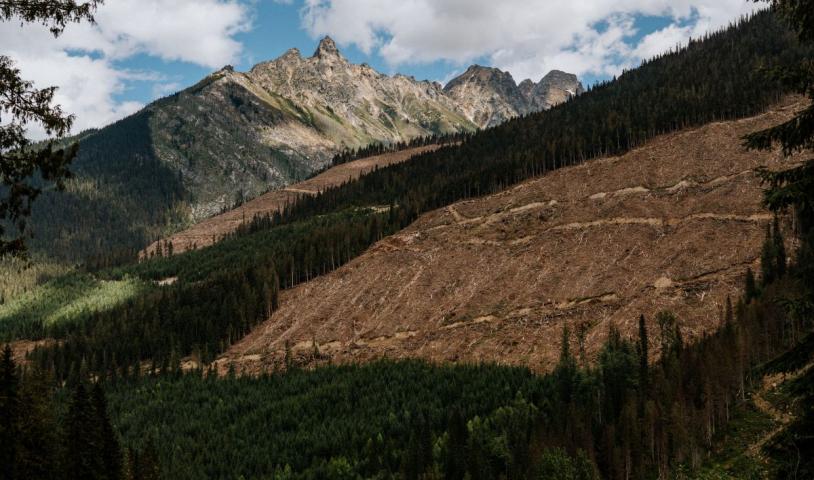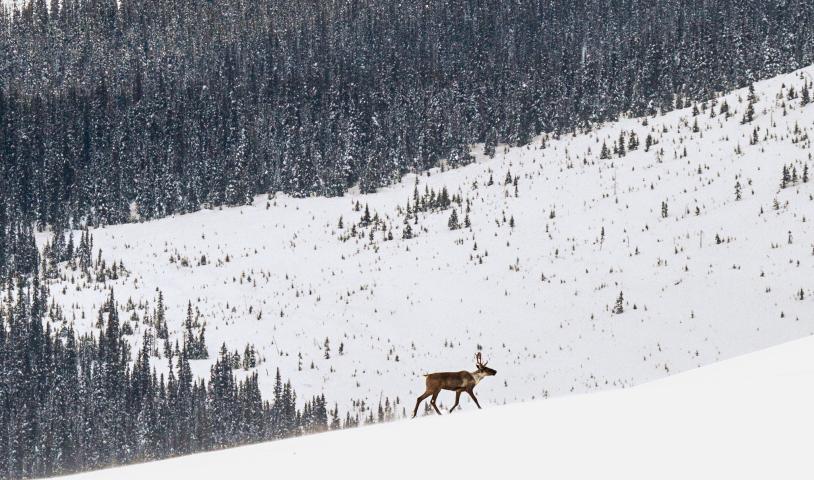The Time to Rise ‑ Wild Times
Saturday, September 17, 2011
September 1st, 2011 - Read Joe Foy's Wild Times column in the Watershed Sentinel as he looks at the fight to reconnect nature's strongholds.
By Joe Foy
It’s time to rise, coffee’s on and a new day is dawning – just look at those colours!”
This summer my wife and I headed south to enjoy some outdoors time in the western mountain states. We wound our way through the high country of Montana, Wyoming, Colorado, Arizona and New Mexico, setting up our tent in State and National Forest campsites along the way and enjoying the mountain sunrises.
We experienced some amazing wild places and First Nations cultural areas. Canyon De Chelly in the Navajo Nation within Arizona was one of the highlights of our trip. The campsite we stayed in was the subject of negotiation between the governments of the Navajo and the US. The park campsite’s management is soon to pass from US control to Navajo control. Learning about some of the history of the area from trail-side displays while hiking the canyon rim and looking down at the centuries old Anasazi culture cliff side dwelling ruins was a never-to-be forgotten day. On the canyon bottom I could see the corn fields still tended by the Navajo people as they have for countless generations.
The experience made me think of places in BC where parks showcase First Nations culture and history. Gwaii Haanas National Park and the Stein Valley Nlaka’pamux Heritage Provincial Park come to mind.
Another memorable wild area is where Montana and Wyoming meet and the Yellowstone River runs through it all. Yellowstone National Park is the first US park.
It’s also a place that is sparking a push for new BC park lands. Several decades ago grizzly bears were brought back from the brink of extinction in Yellowstone and are now gradually extending their range outside the park again. Wolves were reintroduced to the park from Canada and are now expanding out as well. All this has got people thinking about expanding the park system in the US and Canada in a great arc called the Yukon to Yellowstone Corridor to allow the griz and wolves to keep expanding back into their former ranges from Yukon and throughout BC, Alberta, Montana, Wyoming and hopefully south too. Standing on the great divide in Montana in an area that no longer has grizzlies and wolves it was comforting to think that one day they could be back. [For more on the Y2Y see Watershed Sentinel, January-February 2009]
Nature has no borders. What happens in one valley in the great swathe of coastline, prairies, mountains, canyons and forests that run from the Canadian and Alaska north-country all the way down into Mexico echoes all along this corridor of life. What is most needed now for a hopeful future is new ideas and new protected areas – and BC has them both.
For a decade new park protection in BC has slowed to a crawl as the BC Liberal government has mounted a relentless attack on the province’s wild places and wild life. BC’s environmental activists have been dug in, defending wild rivers from private hydro power projects and wild oceans from salmon farm feedlot expansion. When the ban on grizzly bear sport hunting was cancelled by the BC Liberal government, activists on the coast scrambled to do what they could to stop the slaughter, even buying up hunting licences. Citizens on Vancouver Island and the Sunshine Coast have been desperately mapping out the remaining stands of old growth forest even as the BC government allows these ancient forest remnants to be logged down. In the mountains surrounding the Lower Mainland a desperate tree by tree fight continues to stop the looming elimination of BC’s spotted owls due to continued logging of their habitat.
In this cauldron of resistance, citizen activists have formed new protected area proposals and new proposed wildlife laws.
From the beautiful Peace River Valley to the little mountain streams all over the province, people want their wild water protected from damming and divertion. People are demanding a ban on grizzly bear hunting and salmon farming. Citizens want a protected area system that doubles in the coming decade to include Clayoquot Sound, Flathead Valley, Cayoosh and Bendor Mountain ranges and much much more – equal to New Zealand and Costa Rica’s world famous parks. People are tired of fighting tree by tree and want a strong BC endangered species law.
Imagine what a life-sustaining affect all this will have on BC and beyond – all the way from Yukon to Mexico.
It’s all part of BC’s unfinished business. It’s been unfinished for far too long and people are tired of waiting. It’s time to rise.
Joe Foy is Campaign Director for the Wilderness Committee, Canada’s largest citizen-funded membership-based wilderness preservation organization.





